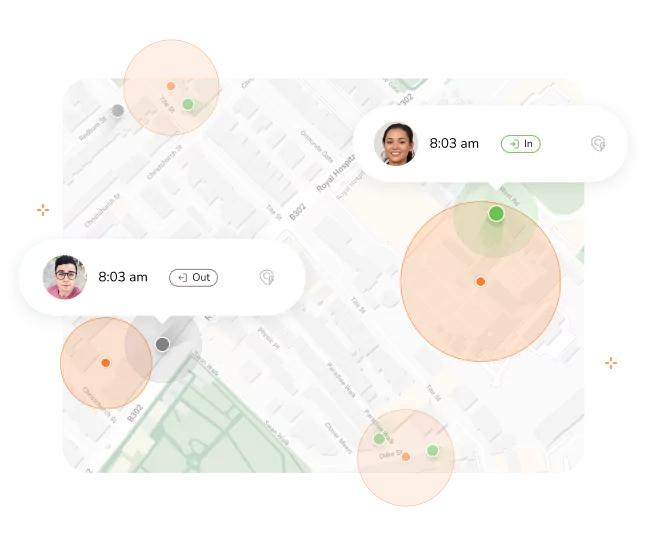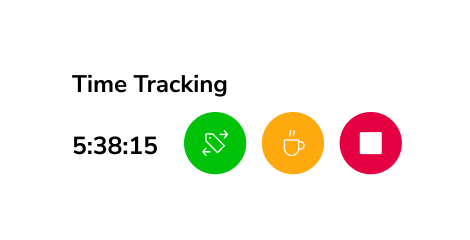
Photo by David Arrowsmith on Unsplash
Background
A top-tier provider of construction and telecom solutions in the US, with expertise in both infrastructure and professional services.
The company delivers a variety of construction and engineering services for over a dozen key partners for cellular providers, covering tower line and antenna swaps, site developments, modifications, troubleshooting, and maintenance.
For confidentiality reasons, the company name is not disclosed.
Challenges with the Old System That Made the Company Change
With a diverse team working across multiple locations and specialized roles, the company faced multiple challenges with their old time tracking system that hindered the efficiency of their operations:
1# Challenges in Tracking Time for Remote Teams:
With teams working in different locations, the company struggled with the logistics of managing time and remote work across different sites. The old system didn’t provide a clear view of employee locations, leading to confusion when logging hours or calculating payroll.
2# Inefficient Task-Based Time Tracking for Project Management:
The company’s work is often project-based, requiring employees to track time against specific tasks or client projects. The old system did not offer a seamless way to track time against multiple projects simultaneously, which led to inconsistent data entry and incomplete project reports.
3# Lack of Transparency in Resource Allocation:
Resource allocation for different projects was a major pain point, as the company lacked real-time visibility into which employees were working on which tasks, and for how long. This lack of transparency created inefficiencies and made it difficult to distribute workload evenly among employees.
4# Poor Employee Experience with Outdated Technology:
The old system’s user interface was difficult for employees to navigate, leading to frustration and mistakes in time entries. This created inefficiencies and an overall poor experience for employees, especially those working in the field or those with less technical expertise.
The Company’s Time Tracking Key Requirements
The company had several critical requirements for a time tracking solution to address the complexities of its operations, ensuring seamless integration and operational efficiency. These key requirements included:
- Mobile Clocking – Enable consultants and employees to log their hours via mobile devices.
- Flexible Work Hours Management – Track hours for employees with varying schedules and client meetings.
- Reporting and Analytics – Provide real-time insights into labor costs, productivity, and project hours.
- Simple and Centralized System – A system that is easy to use and integrate into all existing systems and for all employees.
Why the Company Chose Jibble Time Tracking
When it came time to find a solution to track the team’s time, Jibble stood out as the perfect fit. Here’s why the company decided to integrate it into their workflow:
1# Mobile Time Tracking for On-the-Go Employees:
The company’s team is often on the move, working at client locations or in various external settings. Jibble’s mobile app allowed employees to easily clock in and out directly from their smartphones, ensuring that all hours were tracked accurately without requiring employees to be near a fixed time clock. This flexibility helped streamline the process and ensured accuracy across a dispersed workforce.
2# Geofencing for Accurate Location-Based Timekeeping:
Many of the company’s staff members work at different client sites, and it was crucial to ensure time logs were captured only when employees were physically present at the job site. Jibble’s geofencing feature automatically detected when employees entered or left the designated work locations, allowing them to clock in and out with ease. This feature not only improved the accuracy of time tracking but also minimized the potential for time fraud and misuse.
3# Real-Time Tracking for Project Monitoring:
For a consulting firm like the company, managing multiple projects simultaneously was critical to their success. Jibble provided real-time tracking of hours worked on each project, giving managers immediate visibility into the time spent by employees. This allowed managers to make timely adjustments to resources and deadlines, improving efficiency and the overall management of client projects.
How Was the Onboarding Process?
For the company, the onboarding process for Jibble was a well-organized and collaborative effort between HR, IT, and the operational managers overseeing various client-facing teams. The initial stage began with a comprehensive assessment of their needs, focusing primarily on field-based employees who frequently worked off-site at client locations.
Jibble’s team worked closely with the company to tailor the system, especially the geofencing functionality, to align with their specific project locations. The integration was done over a 5-week timeline, with the first week dedicated to setting up the system, followed by the configuration of project-based time tracking and reporting.
In week two, the company began the first phase of deployment, rolling out the mobile app to their office-based staff. This was followed by training sessions that helped employees familiarize themselves with Jibble’s simple interface and clocking-in features. The focus was on ensuring employees understood how to use geofencing when clocking in at client sites, improving accuracy and accountability.
The second phase involved deploying Jibble for the field teams, followed by training for on-site employees who needed extra support. The process was completed with full integration into their payroll system, which automated timesheet generation and allowed for accurate client billing. The entire process took 5 weeks, resulting in streamlined project management, better time tracking, and increased efficiency in payroll processing.
The Benefits Immediately Identified Post Onboarding
Following the onboarding process, the company quickly experienced several key benefits that significantly contributed to its sustainable improvement, including:
1. Better Project Management: Accurate time tracking for both office and field teams helped the company have a better view of their projects based on actual work hours.
2. Streamlined Administrative Workflows: With Jibble automating time tracking, HR was able to spend less time on administrative tasks and focus on strategic initiatives.
3. Improved Compliance: Real-time tracking allowed the company to ensure all employees were adhering to their work schedules, improving communication and compliance.
Main Method of Jibbling In and Out
The key methods for clocking in for the Company is through:
- Mobile App: For the company, employees working on-site use the mobile app to clock in and out with geofencing or live location, ensuring accuracy.
- Desktop App: Office-based employees also utilize the desktop version to track their hours efficiently.
Conclusion
By integrating Jibble’s time tracking system, the construction and telecom solutions provider significantly improved operational efficiency, accuracy, and resource management.
Key features like mobile clocking, geofencing for location-based timekeeping, and customizable reporting allowed for precise project management, enhancing accountability and reducing administrative errors.
The seamless onboarding process, including tailored configurations and training, ensured a smooth transition, leading to immediate benefits such as accurate payroll processing and streamlined workflows. Jibble’s solution empowered both office and field staff, contributing to the company’s continued success.



